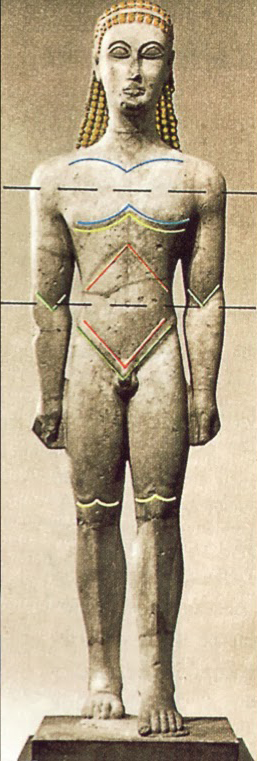Chapter 3 | CONTRAPOST
The most famous posture of human figures in art is the contraposto (= contra-pose), which can be seen beautifully in the statue of the goddess Aphrodite (or Venus) from 360 BC.
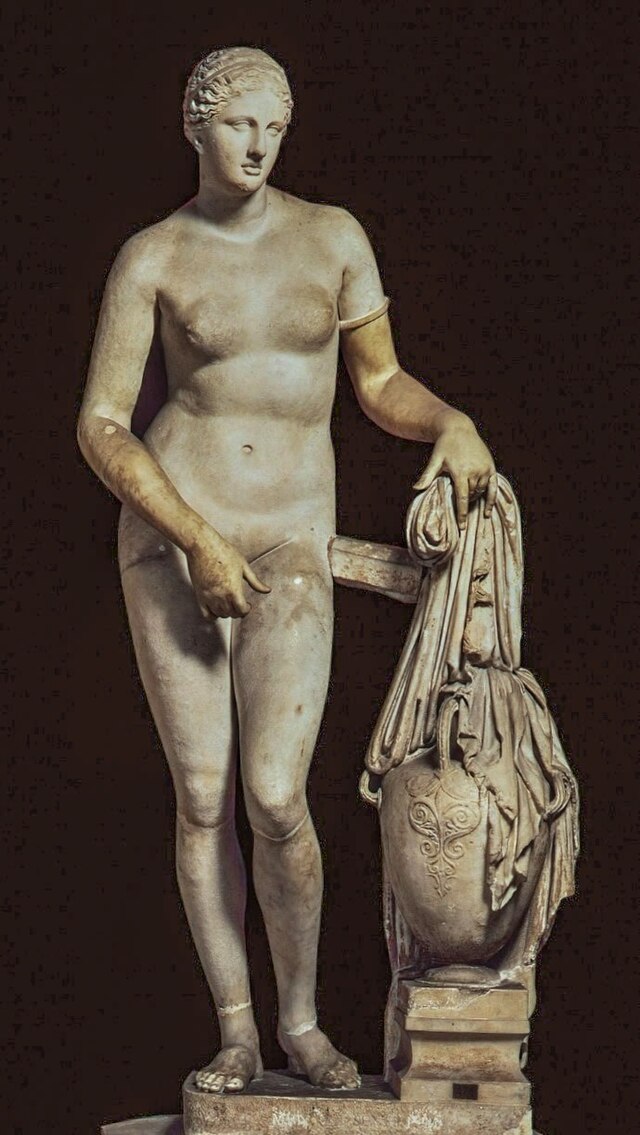
Compare her relaxed pose with the rather stiff, static pose of the model figure. What is the basis of the contraposto that makes it look so loose?
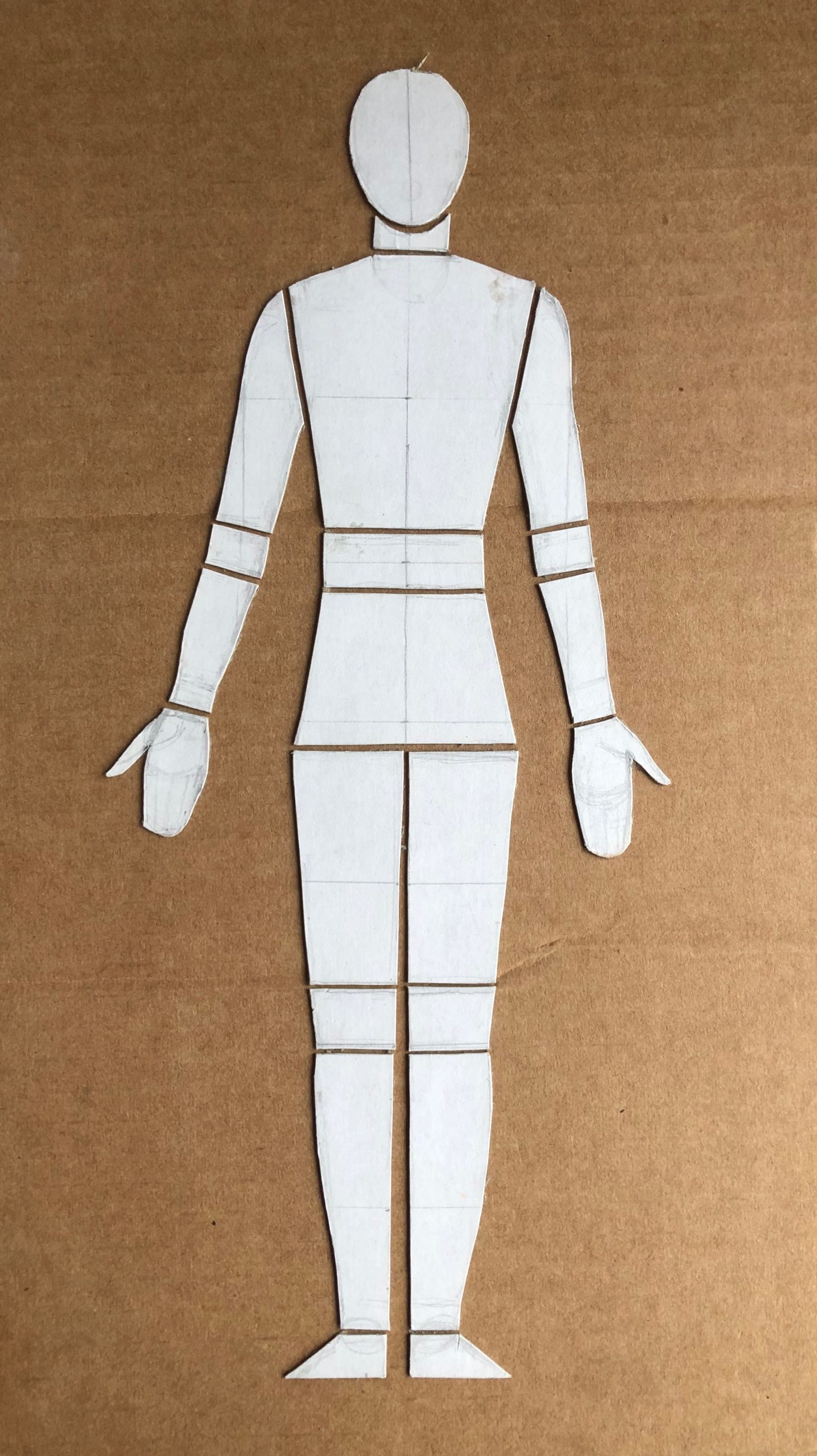
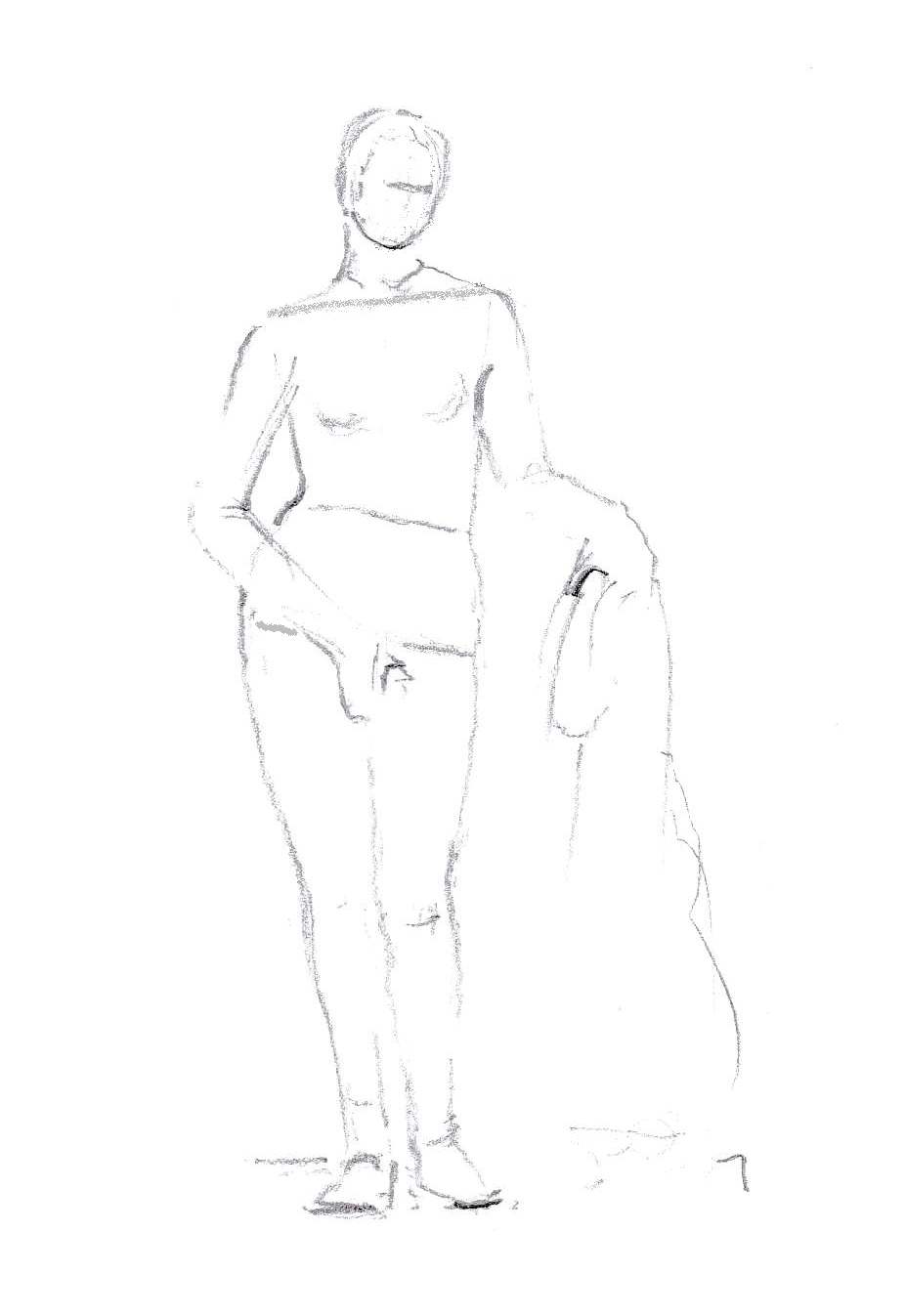
In contraposto, the line of the hips is opposite (contra) to that of the shoulders. I can show this more clearly with a stick figure below. In contraposto, the body weight rests on one leg (the standing leg). The foot of the standing leg is always directly under the head. The vertical axis that runs from the head to the foot of the standing leg is therefore essential. The other leg (the pivot leg) is relaxed, often slightly bent. It is very easy to stand in such a position yourself.
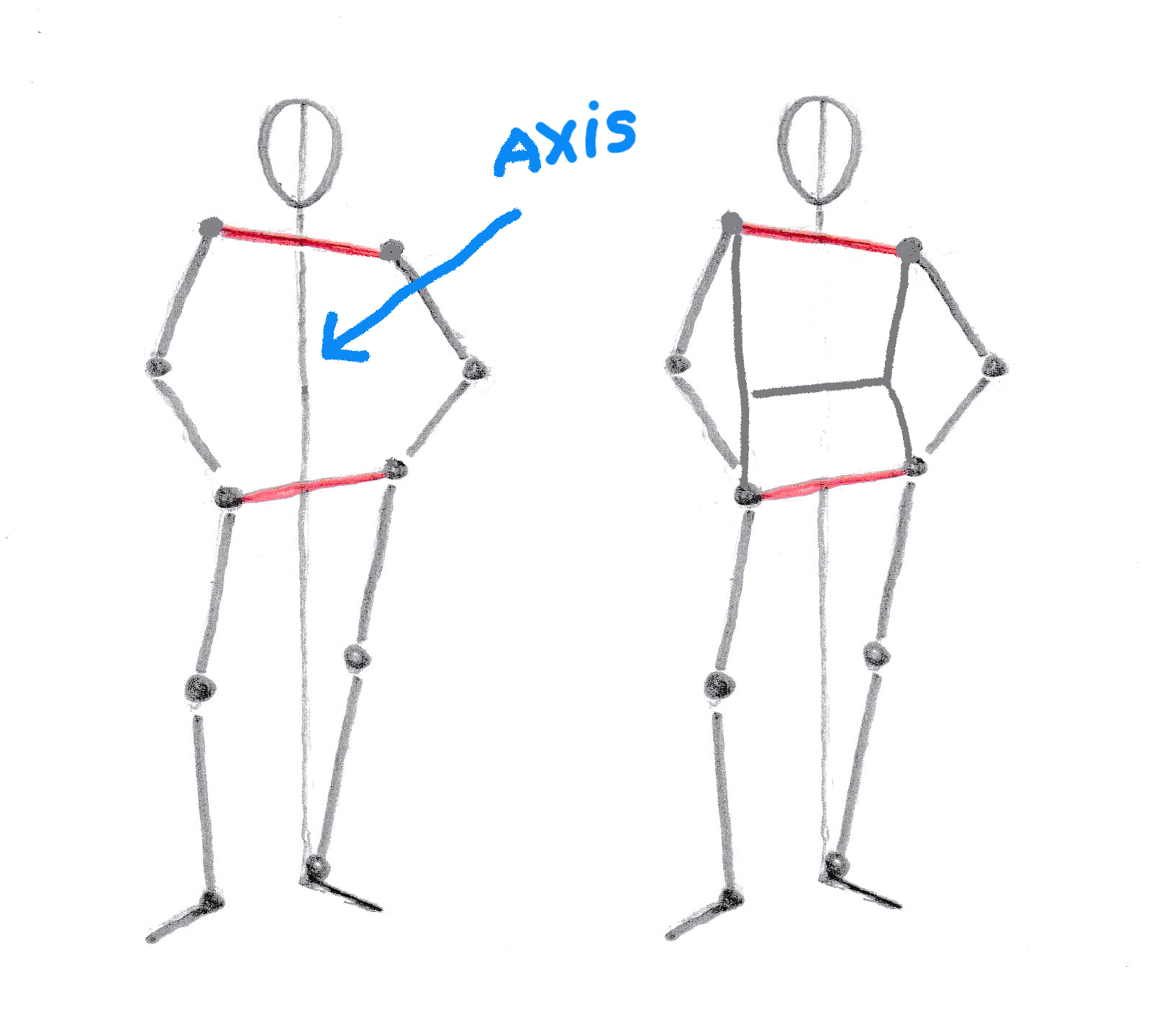
In a pupil’s drawing I have (digitally) indicated the standing leg and the pivot leg again.
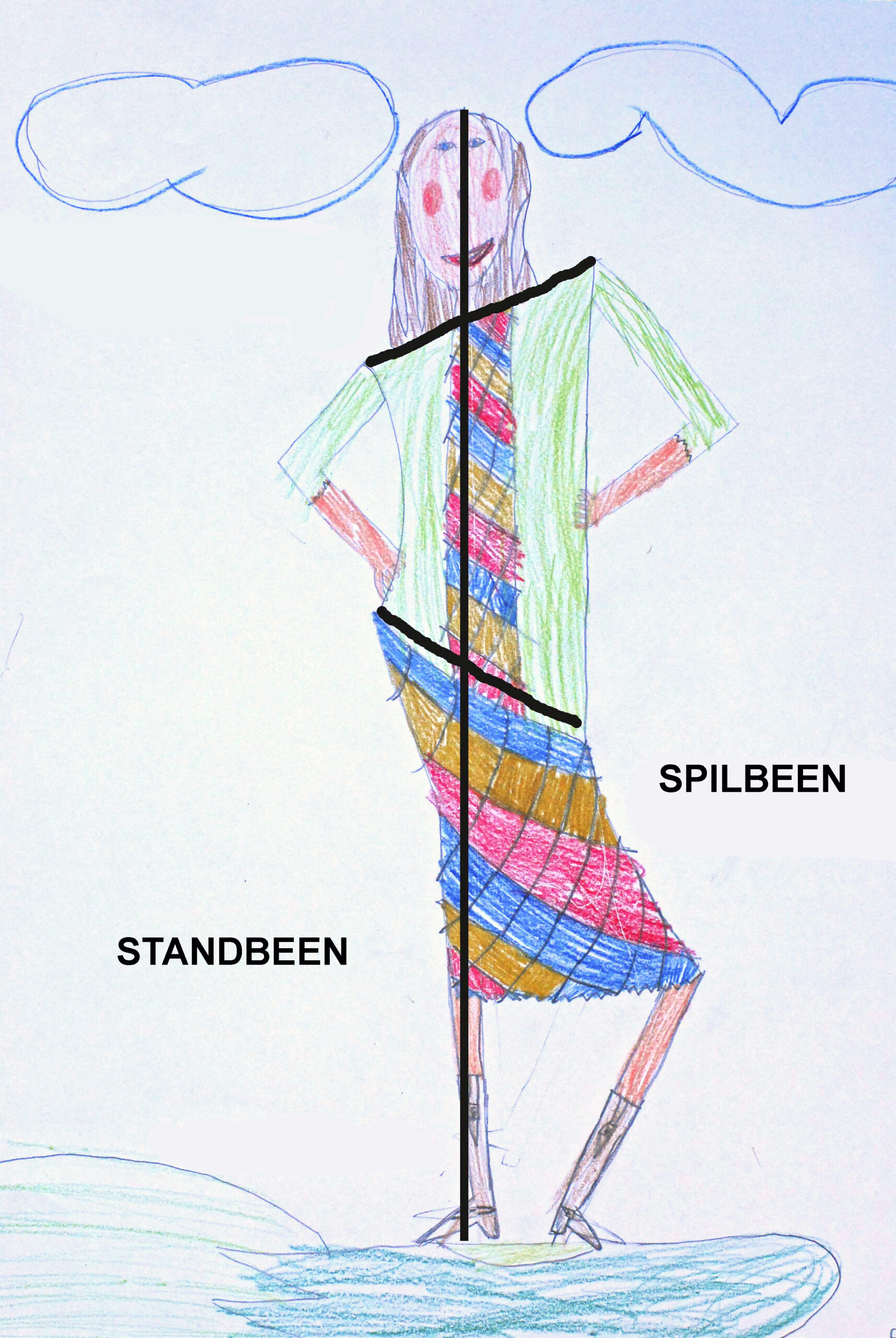
Exercise: Try drawing a human figure in a contraposto. Start with the vertical axis and then the slanting construction lines for the hips and shoulders. You can dress up your figure and create an environment for it.
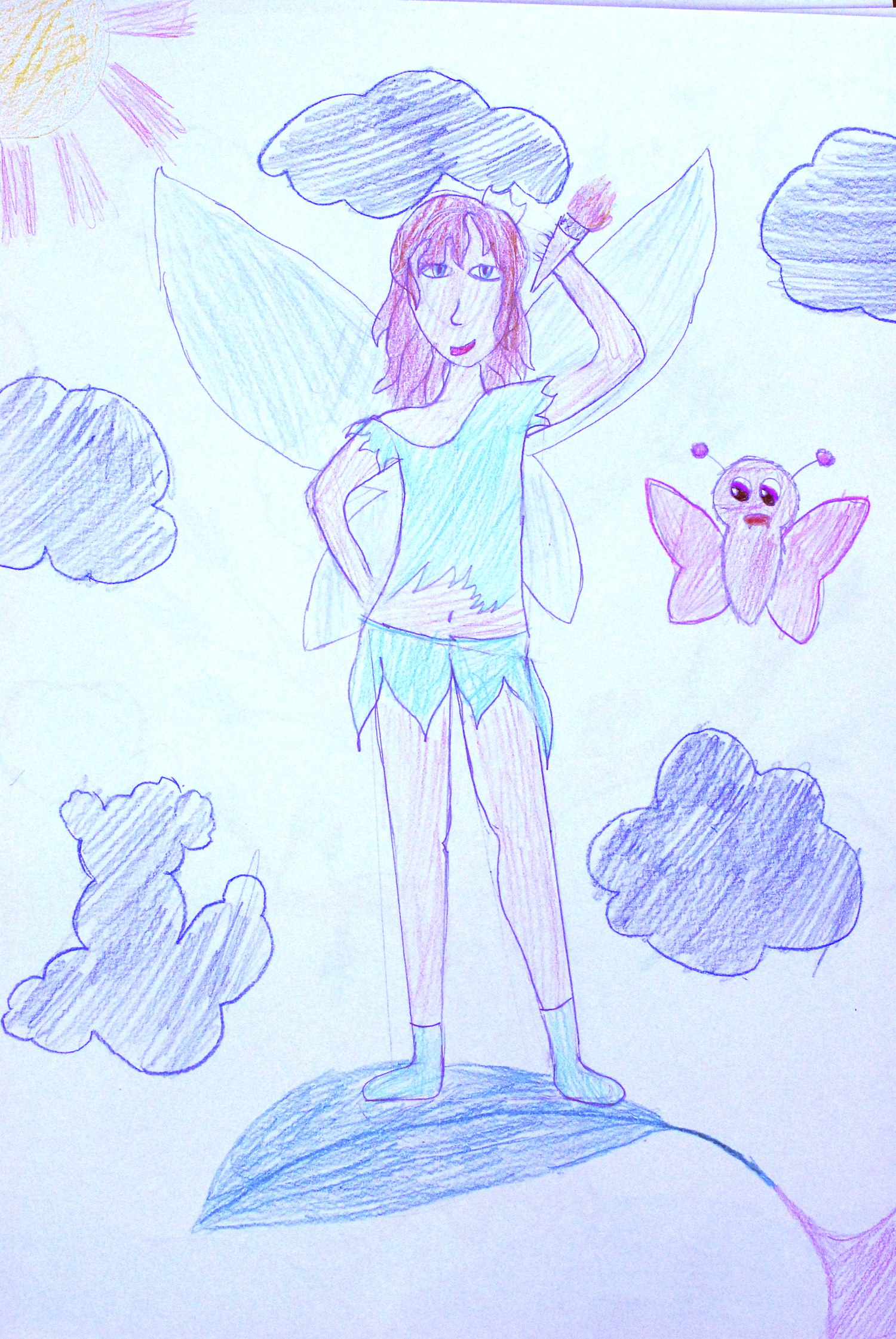
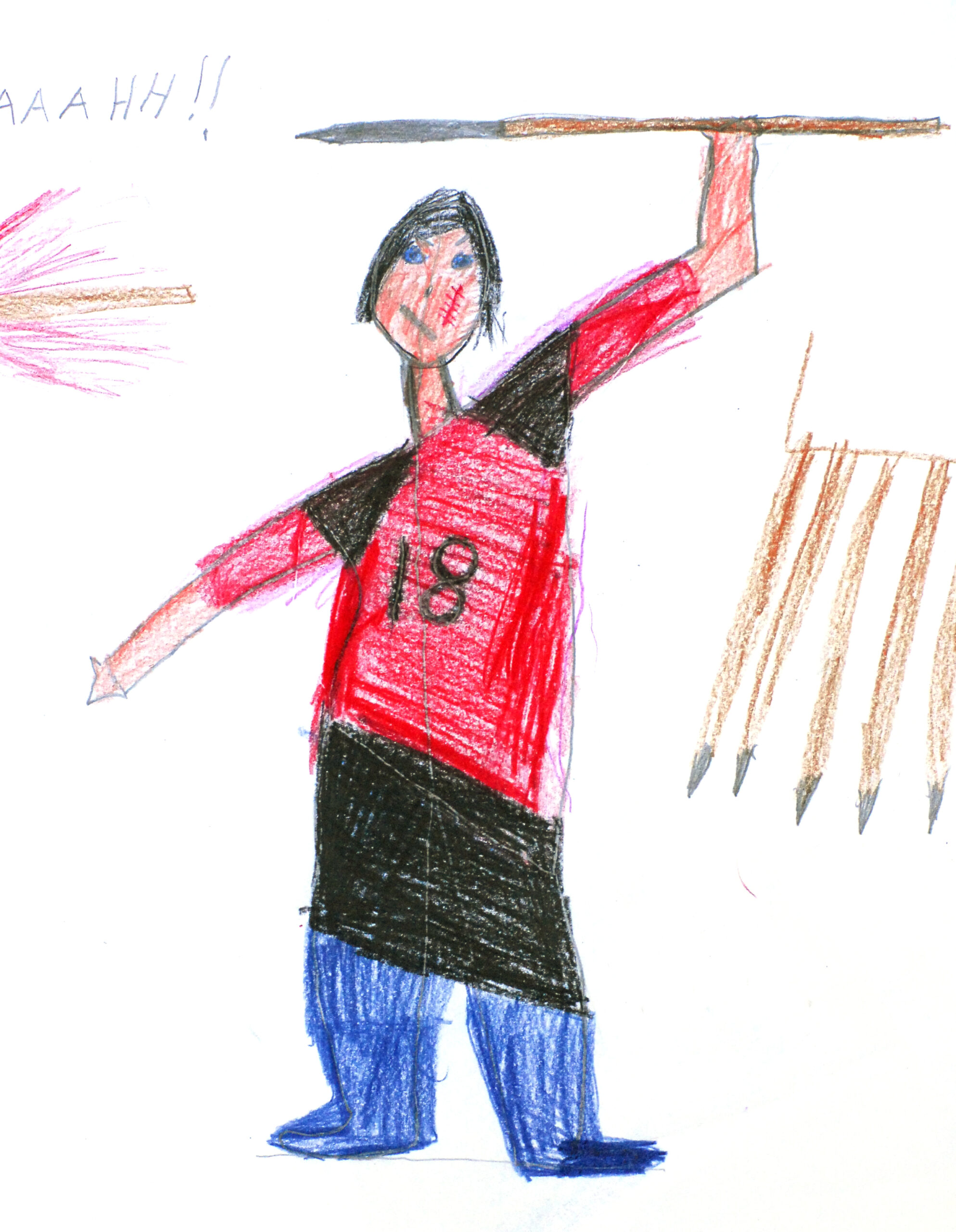
EXTRA: ask a friend to pose for you in a contrapost. Draw your model live or take a photo first to draw his/her posture afterwards.
The contraposto as a natural basic pose was invented in ancient Greece by sculptors such as Praxitiles. Static images (image) no longer fitted the stories in which the Olympian gods moved and behaved like (super) humans and experienced all kinds of adventures. A first step towards these changes in the representation of the human figure was the image below. The figure literally takes a step forward, which means that there is a movement/action.
